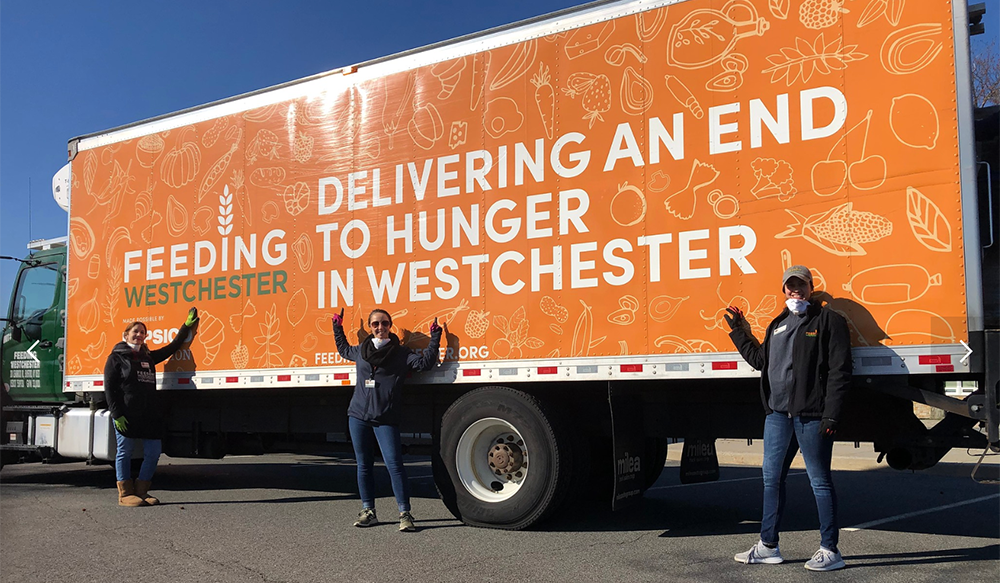
Traditional food pantries have long been relied upon to serve communities, but in recent years, hunger-relief agencies have begun focusing their efforts on a more progressive food assistance tool: pantries on wheels. A mobile food pantry offers numerous benefits that a traditional food pantry does not. This modern means of getting food to the people who need it most has been gaining popularity and attracting the attention of nonprofit agencies and donors nationwide.
Major corporations see the value in mobile food pantries and are investing big bucks into helping to develop them. For instance, Starbucks invested $1.5 million in mobile pantry programs for 17 food banks around America.
Although mobile food pantries have been operating in New York State for almost a decade, they’re a newer phenomenon in many places, such as the city of Dallas and the city of Bridgeport, Connecticut—both of which began operating mobile food assistance programs in 2019.
Let’s take a look at a few of the ways the mobile food pantry is improving the way we help food-insecure people in our communities and, ultimately, changing the world for the better.
3 Ways the Mobile Food Pantry Is Changing the World
1. They enable fast and flexible healthy food delivery for hungry people.
The mobile food pantry removes barriers that prevent food-insecure individuals and families from accessing traditional food pantry resources in underserved areas. People living in food deserts have limited or nonexistent nutritious food options available. This often means that there are no grocery stores or markets with fresh foods nearby, and with limited food options and means of transportation, many people living in food deserts wind up relying on unhealthy meals from fast-food restaurants.
There are more than 23 million people across America living in food deserts, including millions of people who live in low-income, rural areas that are more than 10 miles from a supermarket.
The presence of a mobile food pantry can change the way an entire community is able to eat. When a truckload of healthy food can be delivered directly to food desert areas, food-insecure residents can consistently make better food choices.
Pantries on wheels allow for the fast and flexible delivery of rescued food and grocery products, including meat, fruits, vegetables, grains, and baked goods. Mobile pantries are often able to carry more perishable food than a traditional food pantry because of the fast turnaround time between when the pantry acquires the food items and when those items are provided to individuals.
Mobile pantries are also flexible in being able to add distribution sites depending on where there are evolving needs.
2. They’re removing the stigma surrounding food pantries.
Food insecurity exists in every area of America. More than 40 million people are food insecure and could benefit from food assistance, but there tends to be an underlying stigma surrounding the idea of getting help from hunger-relief organizations. Many mobile pantries aim to remove this stigma by offering more of a shopper experience in which people can pick and choose what they’d like to take home. They tend to also follow a “no questions asked” philosophy, in which anyone who would like food assistance is welcome to get it.
We believe that this market-style distribution approach is helping to change the negative attitude surrounding food pantries, removing the stigma associated with visiting a pantry for help, and helping people feel more at ease.
3. They’re decreasing food waste.
Food waste is a major problem around the world, including here in America, where we toss out more than 400 pounds of food per person every year. Mobile pantries are working hard to reduce food waste by securing perishable food that would otherwise be thrown out by businesses, including wholesalers and retailers, while employing a fast turnaround from the time it’s secured to the time it’s in the hands of hungry people. These food recovery efforts not only improve the lives of low-income families but also help the earth by diverting food from landfills.
Feeding Westchester alone recovers 3 million pounds of nutritious food that would otherwise go to waste annually.
Check out these six surprising food waste facts [blog article link TBD] to learn more about food waste in America.
The Bottom Line
The mobile food pantry is a wonderful way to directly help families in underserved communities. Mobile pantry programs across America are helping to reduce hunger by bringing fresh, healthy food right to the areas where it’s needed most.
Feeding Westchester has been proud to offer its own robust Mobile Food Pantry program for six years and counting. Visit our Mobile Food Pantry schedule to find out where our trucks distribute food each week around Westchester County.
Interested in finding out if there’s a mobile pantry program offered near you? Utilize the Feeding America food bank locator and reach out to your local food bank to find out more about its offerings in your community.







